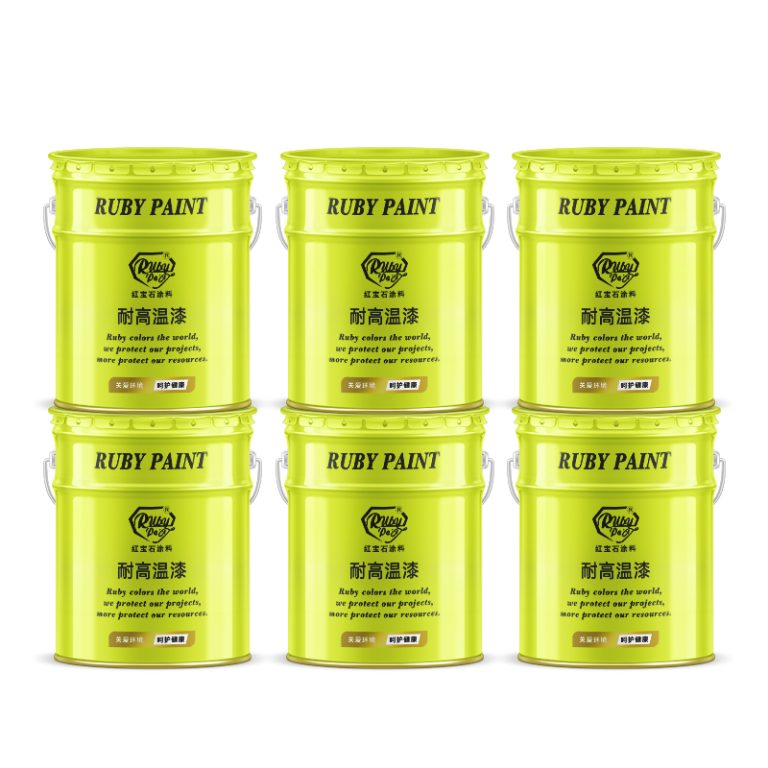Table of Contents
Understanding the Environmental Impact of Fluorocarbon Ozone Depletion
Fluorocarbons, once celebrated for their versatility in industrial and consumer applications, now stand at the center of environmental concern due to their role in ozone depletion. Understanding the intricacies of fluorocarbon ozone depletion is crucial for comprehending its environmental impact and devising effective mitigation strategies.
Fluorocarbons, composed of carbon and fluorine atoms, have long been prized for their stability and resistance to chemical reactions. This characteristic made them ideal for various purposes, including refrigeration, air conditioning, and aerosol propellants. However, their stability comes with a downside: they persist in the atmosphere for extended periods, where they can interact with ozone molecules.
Ozone, a molecule consisting of three oxygen atoms, plays a vital role in the Earth’s atmosphere by absorbing harmful ultraviolet (UV) radiation from the sun. This absorption prevents most of the sun’s UV rays from reaching the Earth’s surface, protecting life from the damaging effects of UV radiation. However, fluorocarbons can disrupt this delicate balance.
When released into the atmosphere, fluorocarbons eventually reach the stratosphere, where UV radiation breaks them down into their constituent atoms. These atoms can then react with ozone molecules, leading to the depletion of the ozone layer. The ozone layer’s thinning allows more UV radiation to penetrate the atmosphere, increasing the risk of skin cancer, cataracts, and other adverse health effects in humans and animals. Furthermore, increased UV radiation can harm ecosystems by damaging marine phytoplankton, terrestrial plants, and aquatic organisms.
The discovery of the Antarctic ozone hole in the 1980s served as a wake-up call, prompting international efforts to address the issue. The Montreal Protocol, signed in 1987, stands as one of the most successful environmental treaties, aiming to phase out the production and use of ozone-depleting substances, including fluorocarbons. Since its implementation, the Montreal Protocol has led to significant reductions in the emissions of these harmful compounds, resulting in the gradual recovery of the ozone layer.
However, despite these achievements, challenges remain. Some fluorocarbons, such as hydrochlorofluorocarbons (HCFCs) and hydrofluorocarbons (HFCs), were introduced as alternatives to more harmful ozone-depleting substances but still contribute to climate change as potent greenhouse gases. As efforts to mitigate climate change intensify, there is a growing recognition of the need to address fluorocarbon emissions comprehensively.
Transitioning away from fluorocarbons requires a multifaceted approach that encompasses technological innovation, regulatory measures, and international cooperation. Alternative refrigerants with lower global warming potential, such as hydrocarbons and natural refrigerants like ammonia and carbon dioxide, offer promising solutions. Additionally, enhancing energy efficiency in refrigeration and air conditioning systems can reduce the overall demand for cooling and, consequently, the use of fluorocarbon-based refrigerants.
Regulatory frameworks play a crucial role in driving the transition to fluorocarbon-free technologies. Strengthening existing regulations, such as the Kigali Amendment to the Montreal Protocol, which targets the phasedown of HFCs, can accelerate the adoption of environmentally friendly alternatives. Moreover, incentivizing research and development in green technologies can spur innovation and facilitate the transition process.

International cooperation is essential for addressing fluorocarbon emissions effectively. Collaborative efforts among governments, industries, and environmental organizations can facilitate knowledge sharing, technology transfer, and capacity building, enabling countries to meet their commitments under international agreements.
In conclusion, understanding the environmental impact of fluorocarbon ozone depletion is vital for safeguarding the Earth’s ozone layer and mitigating climate change. By embracing sustainable alternatives, implementing robust regulations, and fostering global collaboration, we can pave the way towards a future free from the harmful effects of fluorocarbons on the environment and human health.
Exploring Sustainable Alternatives to Fluorocarbon Ozone-Depleting Substances
Fluorocarbon ozone-depleting substances have long been a concern for environmental scientists and policymakers. These compounds, often used in refrigeration, air conditioning, and aerosol propellants, have been linked to the depletion of the ozone layer, which protects the Earth from harmful ultraviolet radiation. As a result, efforts have been underway to find sustainable alternatives to fluorocarbons that can mitigate their adverse environmental impact.
One such alternative gaining traction is hydrofluorocarbons (HFCs). Unlike fluorocarbons, HFCs do not contain chlorine, which is the primary culprit in ozone depletion. However, while HFCs do not directly harm the ozone layer, they are potent greenhouse gases, contributing to global warming. Consequently, while HFCs offer a solution to ozone depletion, they present a new environmental challenge.
In response to this dilemma, researchers have been exploring alternative substances that offer both ozone-friendly properties and minimal impact on climate change. One promising candidate is hydrofluoroolefins (HFOs). HFOs have a much lower global warming potential compared to HFCs, making them a more environmentally friendly option. Additionally, HFOs break down more quickly in the atmosphere, further reducing their impact on climate change.
Another alternative being investigated is natural refrigerants such as carbon dioxide (CO2), ammonia (NH3), and hydrocarbons. These substances occur naturally in the environment and have minimal environmental impact compared to fluorocarbons and HFCs. Additionally, natural refrigerants are often more energy-efficient, further reducing their carbon footprint.
However, despite their environmental benefits, natural refrigerants also pose challenges. CO2, for example, requires higher operating pressures, which can increase the cost of refrigeration systems. Ammonia, while efficient and environmentally friendly, is toxic and poses safety risks if not handled properly. Hydrocarbons, such as propane and isobutane, are flammable, requiring additional safety measures in their use.
In light of these challenges, researchers continue to explore new materials and technologies to address the need for sustainable refrigerants. One emerging technology is solid-state refrigeration, which relies on the thermoelectric effect to create cooling without the need for traditional refrigerants. While still in the early stages of development, solid-state refrigeration has the potential to revolutionize the cooling industry by providing efficient, environmentally friendly cooling solutions.
In addition to developing alternative refrigerants, efforts are also underway to improve the efficiency of existing refrigeration systems. Advancements in compressor technology, insulation materials, and system design have led to significant reductions in energy consumption and environmental impact. Furthermore, initiatives to phase out fluorocarbon-based refrigerants and promote the use of sustainable alternatives are gaining momentum globally.
Transitioning away from fluorocarbon ozone-depleting substances is not without its challenges, but the benefits are clear. By adopting sustainable alternatives, we can protect the ozone layer, mitigate climate change, and create a healthier environment for future generations. Continued research and innovation in this field are essential to achieving these goals and ensuring a sustainable future for all.
The Role of International Agreements in Mitigating Fluorocarbon Ozone Depletion
The Role of International Agreements in Mitigating Fluorocarbon Ozone Depletion
Fluorocarbons, once hailed for their versatility and effectiveness in various industrial and domestic applications, have become a major concern due to their detrimental impact on the ozone layer. Ozone depletion, primarily caused by the release of chlorofluorocarbons (CFCs) and other halogenated compounds, poses significant threats to human health and the environment. Recognizing the urgency of addressing this global challenge, nations worldwide have come together to forge international agreements aimed at mitigating fluorocarbon ozone depletion.
The Montreal Protocol, established in 1987, stands as a pivotal milestone in international efforts to combat ozone depletion. Signed by 197 countries, the protocol aimed to phase out the production and consumption of ozone-depleting substances, including CFCs and halons. The success of the Montreal Protocol in reducing the emission of these harmful compounds underscores the effectiveness of international cooperation in addressing environmental issues.
Central to the Montreal Protocol’s success is its framework for setting targets and timelines for phasing out ozone-depleting substances. Through a series of amendments and adjustments, the protocol has continuously tightened regulations, accelerating the phase-out process and promoting the adoption of safer alternatives. This proactive approach has been instrumental in curbing the depletion of the ozone layer and mitigating the associated risks.
Moreover, the Montreal Protocol exemplifies the principle of common but differentiated responsibilities, acknowledging the varying capacities and contributions of nations to ozone protection. Developed countries, which historically contributed the most to ozone depletion, bear greater responsibility for phasing out ozone-depleting substances and providing assistance to developing countries in their transition to safer alternatives. This principle fosters equitable participation and ensures that the burden of environmental protection is shared fairly among nations.
In addition to the Montreal Protocol, other international agreements have emerged to address specific aspects of fluorocarbon ozone depletion. The Kyoto Protocol, for instance, includes provisions for reducing emissions of hydrofluorocarbons (HFCs), potent greenhouse gases used as replacements for CFCs. While HFCs do not directly deplete the ozone layer, they contribute to global warming, exacerbating the adverse effects of climate change. By targeting HFC emissions, the Kyoto Protocol complements the objectives of the Montreal Protocol, promoting both ozone protection and climate mitigation.
Furthermore, regional agreements and initiatives play a crucial role in supplementing global efforts to mitigate fluorocarbon ozone depletion. The European Union’s F-Gas Regulation, for example, aims to phase down the use of fluorinated gases, including HFCs, within its member states. By imposing quotas on the production and importation of these gases and promoting the adoption of alternative technologies, the regulation aligns with the objectives of international agreements while addressing regional concerns and priorities.
Despite the progress achieved through international agreements, challenges remain in fully addressing fluorocarbon ozone depletion. Compliance with regulations, enforcement mechanisms, and monitoring efforts are critical areas that require ongoing attention and improvement. Additionally, the emergence of new fluorinated compounds and technologies underscores the need for continued vigilance and adaptation in regulatory frameworks.
In conclusion, international agreements play a crucial role in mitigating fluorocarbon ozone depletion by providing a framework for collective action and cooperation among nations. The Montreal Protocol, along with other agreements and initiatives, demonstrates the effectiveness of multilateral efforts in addressing environmental challenges on a global scale. By adhering to the principles of shared responsibility and continuous improvement, the international community can safeguard the ozone layer and protect the planet for future generations.




